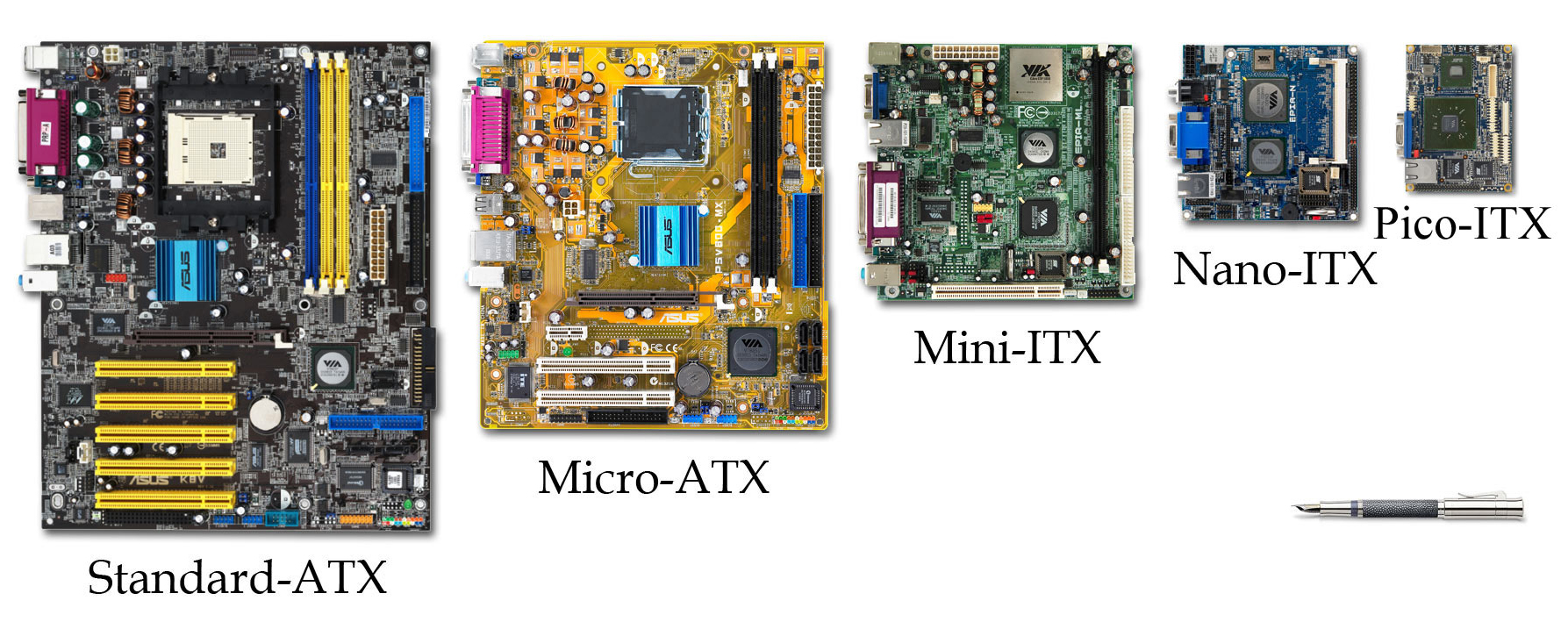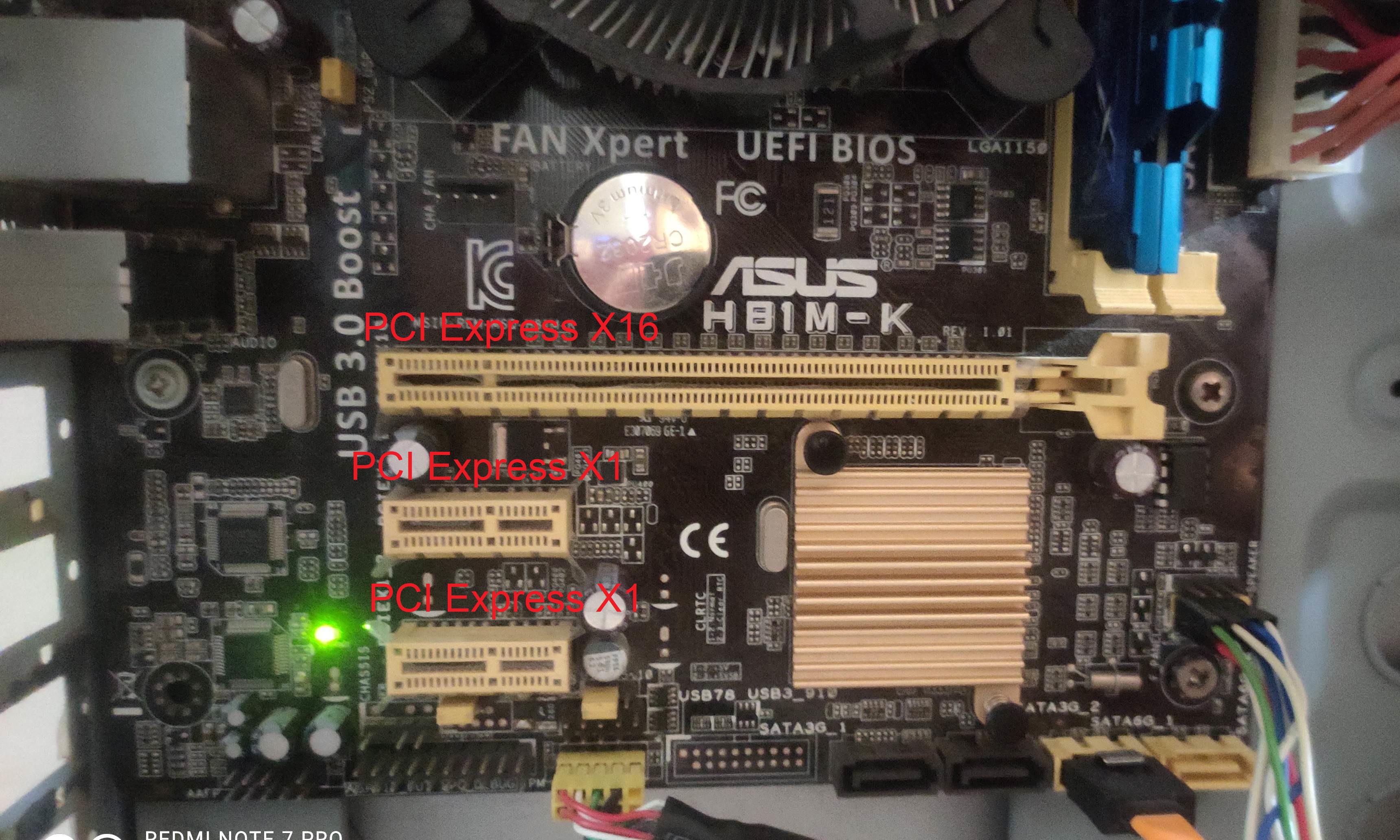|
SFF-SIG
The Small Form Factor Special Interest Group (SFF-SIG, pronounced ''ess-eff-eff-sig'') is an international non-profit standards body focused on modular computer hardware technologies used in embedded and small form factor computers and controllers. Members are mainly computer board and component manufacturers. The group was founded in 2007 and had a web site until early 2020. History SFF-SIG generally targets low power components and processors from VIA Technologies and Intel including the Nano and Atom processors, although products for RISC processors were discussed in some working groups. VIA, WinSystems, and Octagon Systems were founding members of SFF-SIG. It was created in 2007. A logo and web site debuted in April 2008. SFF-SIG creates, promotes, and maintains embedded computer standards for form factors and computer buses. Examples include the governing documents and trademarks for CoreExpress, Pico-ITX, Express104, and SUMIT. Members use the specifications to build ... [...More Info...] [...Related Items...] OR: [Wikipedia] [Google] [Baidu] |
SUMIT
Stackable Unified Module Interconnect Technology (SUMIT) is a connector between expansion buses independent of motherboard form factor. Boards featuring SUMIT connectors are usually used in "stacks" where one board sits on top of another. It was published by the Small Form Factor Special Interest Group. Details Two identical connectors carry the signals specified by the standard. Commonly referred to as SUMIT A & SUMIT B, designers have the option of designing with either both SUMIT A and B, or just SUMIT A. The signals carried within each connector is as follows: ''SUMIT A:'' * One PCI-Express x1 lane * Four USB 2.0 * ExpressCard * LPC * SPI/uWire * SMBus/I2C Bus ''SUMIT B:'' * One PCI-Express x1 lane * One PCI-Express x4 or four more PCI-Express x1 lanes As of August 2009, three board form factors used the SUMIT connectors for embedded applications: ISM or SUMIT-ISM 0mm × 96mm Pico-ITXe 2mm × 100mm and Pico-I/O 0mm × 72mm See also * VMEbus * VPX * CompactPCI * PC/104 ... [...More Info...] [...Related Items...] OR: [Wikipedia] [Google] [Baidu] |
Pico-ITX
In computer design, Pico-ITX is a PC motherboard form factor announced by VIA Technologies in January 2007 and demonstrated later the same year at CeBIT. The formfactor was transferred over to SFF-SIG in 2008. The Pico-ITX form factor specifications call for the board to be , which is half the area of Nano-ITX. EPIA PX PX10000G The first motherboard produced in this form factor is called EPIA PX10000G. It is and 10 layers deep. The operating temperature range is from 0°C to about 50°C. The operating humidity level (relative and non-condensing) can be from 0% to about 95%. It uses a 1 GHz VIA C7-M processor, a VIA VX700 chip set, and is RoHS compliant. It has onboard VGA video, VIA VT6106S 10/100 8P8C Ethernet, UDMA 33/66/100/133 44-pin ATA (1x), and SATA (1x) I/O. DVI and LVDS video-out, USB 2.0, COM, PS/2 Mouse & Keyboard, and HD 5.1 channel audio (supplied by a VIA VT1708A chip) are supported through the usage of I/O pin headers and add-on modules/ daugh ... [...More Info...] [...Related Items...] OR: [Wikipedia] [Google] [Baidu] |
Small Form Factor (desktop And Motherboard)
Small form factor (SFF or SFX) is a term used for desktop computers, and their enclosures and motherboards, to indicate that they are designed in accordance with one of several standardized computer form factors intended to minimize the volume and footprint of a desktop computer compared to the standard ATX form factor. For comparison purposes, the size of an SFF case is usually measured in litres. SFFs are available in a variety of sizes and shapes, including shoeboxes, cubes, and book-sized PCs. Their smaller and often lighter construction has made them popular as home theater PCs and as gaming computers for attending LAN parties. Manufacturers also emphasize the aesthetic and ergonomic design of SFFs since users are more likely to place them on top of a desk or carry them around. Advancements in component technology together with reductions in size means a powerful computer is no longer restricted to the huge towers of old. Small form factors do not include computing dev ... [...More Info...] [...Related Items...] OR: [Wikipedia] [Google] [Baidu] |
CoreExpress
CoreExpress modules are complete computer-on-module (COM) highly integrated, compact computers that can be used in an embedded computer board design, much like an integrated circuit component. COMs integrate CPU, memory, graphics, and BIOS, and common I/O interfaces. The interfaces are modern, using only digital buses such as PCI Express, Serial ATA, Ethernet, USB, and HD audio (Intel High Definition Audio). All signals are accessible on a high-density, high-speed, 220-pin connector. Although most implementations use Intel processors, the specification is open for different CPU modules. CoreExpress modules are mounted on a custom carrier board, containing the peripherals required for the specific application. In this way, small but highly specialized computer systems can be built. The CoreExpress form factor was originally developed by LiPPERT Embedded Computers and standardized by the Small Form Factor Special Interest Group in March 2010. Size and mechanics The specification d ... [...More Info...] [...Related Items...] OR: [Wikipedia] [Google] [Baidu] |
Small Form Factor Committee
The Small Form Factor Committee (SFF) is an ''ad hoc'' electronics industry group formed to quickly develop interoperability specifications (as a complement to the traditional standards process). The SFF Committee was formed in 1990 to define the emerging disk drive form factor for laptop computers. In November 1992, the members broadened the objectives to complement the formal standards process in any area of the storage industry which needed prompt attention. SFF projects are in areas not addressed by standards committees because of timing, charter, or other considerations. The committee consists of members that represent companies that develop, manufacture, and sell products and components for the storage industry. Its members include but are not limited to representatives from companies such as Amphenol Interconnect, Avago Technologies, Broadcom, Dell, FCI Electronics, Foxconn, Fujitsu Components America, Hewlett Packard, Hitachi, IBM, Intel, LSI Corporation, Molex, Pan ... [...More Info...] [...Related Items...] OR: [Wikipedia] [Google] [Baidu] |
Industry Standard Architecture
Industry Standard Architecture (ISA) is the 16-bit internal bus of IBM PC/AT and similar computers based on the Intel 80286 and its immediate successors during the 1980s. The bus was (largely) backward compatible with the 8-bit bus of the 8088-based IBM PC, including the IBM PC/XT as well as IBM PC compatibles. Originally referred to as the PC bus (8-bit) or AT bus (16-bit), it was also termed ''I/O Channel'' by IBM. The ISA term was coined as a retronym by competing PC-clone manufacturers in the late 1980s or early 1990s as a reaction to IBM attempts to replace the AT-bus with its new and incompatible Micro Channel architecture. The 16-bit ISA bus was also used with 32-bit processors for several years. An attempt to extend it to 32 bits, called Extended Industry Standard Architecture (EISA), was not very successful, however. Later buses such as VESA Local Bus and PCI were used instead, often along with ISA slots on the same mainboard. Derivatives of the AT bus structure ... [...More Info...] [...Related Items...] OR: [Wikipedia] [Google] [Baidu] |
Low Pin Count
The Low Pin Count (LPC) bus is a computer bus used on IBM-compatible personal computers to connect low-bandwidth devices to the CPU, such as the BIOS ROM (BIOS ROM was moved to the Serial Peripheral Interface (SPI) bus in 2006), "legacy" I/O devices (integrated into Super I/O, Embedded Controller or IPMI chip), and Trusted Platform Module (TPM). "Legacy" I/O devices usually include serial and parallel ports, PS/2 keyboard, PS/2 mouse, and floppy disk controller. Most PC motherboards with an LPC bus have either a Platform Controller Hub (PCH) or a southbridge chip, which acts as the host and controls the LPC bus. All other devices connected to the physical wires of the LPC bus are peripherals. Overview The LPC bus was introduced by Intel in 1998 as a software-compatible substitute for the Industry Standard Architecture (ISA) bus. It resembles ISA to software, although physically it is quite different. The ISA bus has a 16-bit data bus and a 24-bit address bus tha ... [...More Info...] [...Related Items...] OR: [Wikipedia] [Google] [Baidu] |
PCI Express
PCI Express (Peripheral Component Interconnect Express), officially abbreviated as PCIe or PCI-e, is a high-speed serial computer expansion bus standard, designed to replace the older PCI, PCI-X and AGP bus standards. It is the common motherboard interface for personal computers' graphics cards, hard disk drive host adapters, SSDs, Wi-Fi and Ethernet hardware connections. PCIe has numerous improvements over the older standards, including higher maximum system bus throughput, lower I/O pin count and smaller physical footprint, better performance scaling for bus devices, a more detailed error detection and reporting mechanism (Advanced Error Reporting, AER), and native hot-swap functionality. More recent revisions of the PCIe standard provide hardware support for I/O virtualization. The PCI Express electrical interface is measured by the number of simultaneous lanes. (A lane is a single send/receive line of data. The analogy is a highway with traffic in both direc ... [...More Info...] [...Related Items...] OR: [Wikipedia] [Google] [Baidu] |
ITU-T
The ITU Telecommunication Standardization Sector (ITU-T) is one of the three sectors (divisions or units) of the International Telecommunication Union (ITU). It is responsible for coordinating standards for telecommunications and Information Communication Technology Information and communications technology (ICT) is an extensional term for information technology (IT) that stresses the role of unified communications and the integration of telecommunications (telephone lines and wireless signals) and computers, ... such as X.509 for cybersecurity, Y.3172 and Y.3173 for machine learning, and H.264/MPEG-4 AVC for video compression, between its Member States, Private Sector Members, and Academia Members. The first meeting of the World Telecommunication Standardization Assembly (WTSA), the sector's governing conference, took place on 1 March of that year. ITU-T has a permanent secretariat called the Telecommunication Standardization Bureau (TSB), which is based at the ITU headquarters ... [...More Info...] [...Related Items...] OR: [Wikipedia] [Google] [Baidu] |
Open Standard
An open standard is a standard that is openly accessible and usable by anyone. It is also a prerequisite to use open license, non-discrimination and extensibility. Typically, anybody can participate in the development. There is no single definition, and interpretations vary with usage. The terms ''open'' and ''standard'' have a wide range of meanings associated with their usage. There are a number of definitions of open standards which emphasize different aspects of openness, including the openness of the resulting specification, the openness of the drafting process, and the ownership of rights in the standard. The term "standard" is sometimes restricted to technologies approved by formalized committees that are open to participation by all interested parties and operate on a consensus basis. The definitions of the term ''open standard'' used by academics, the European Union, and some of its member governments or parliaments such as Denmark, France, and Spain preclude open standar ... [...More Info...] [...Related Items...] OR: [Wikipedia] [Google] [Baidu] |
Computer-on-module
A computer-on-module (COM) is a type of single-board computer (SBC), a subtype of an embedded computer system. An extension of the concept of system on chip (SoC) and system in package (SiP), COM lies between a full-up computer and a microcontroller in nature. It is very similar to a system on module (SOM). Design COMs are complete embedded computers built on a single circuit board. The design is centered on a microprocessor with RAM, input/output controllers and all other features needed to be a functional computer on the one board. However, unlike a single-board computer, the COM usually lacks the standard connectors for any input/output peripherals to be attached directly to the board. The module usually needs to be mounted on a carrier board (or "baseboard") which breaks the bus out to standard peripheral connectors. Some COMs also include peripheral connectors. Some can be used without a carrier. A COM solution offers a dense package computer system for use in s ... [...More Info...] [...Related Items...] OR: [Wikipedia] [Google] [Baidu] |




